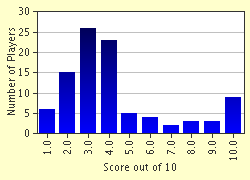Quiz Answer Key and Fun Facts
1. Mayhew divided the street (and river) people into six classes (which were then sub-divided). Street-sellers and 'street-performers, artists and showmen' are reasonably obvious. Which of the following is *not* one of his classes?
2. London had a total population exceeding 2.685 million in 1851. The 1841 census gave 2,045 'hawkers, hucksters and peddlers' and no street performers or costermongers at all. How many costermongers (mobile sellers of fish, poultry, fruit and vegetables) does Mayhew estimate there were?
3. Which of these was *not* an amusement popular among costermongers? Note that the wrong answer is similar to an amusement they were fond of.
4. What proportion of cohabiting costermongers were married?
5. How many street people would be reduced to the brink of starvation by three wet days (according to a clergyman reduced to working as a street seller of 'stenographic cards'. These cards were supposed to teach you shorthand).
6. Mayhew gives tables of the quantities of various products sold and the proportion sold by costermongers. For rhubarb (classed as a vegetable) the sale was about 91,200 dozen bundles with a tenth sold by costers. He was writing in about 1850. Approximately when was rhubarb was first sold in London (other than as a medicine)?
7. Costermongers were known for the ill-treatment of their animals.
8. Which of these types of street sellers of drinks was *not* listed by Mayhew? (The numbers are given just for interest).
9. Which of these types of street sellers was *not* listed by Mayhew? (The numbers are given just for interest).
10. Which of these terms is not correctly defined?
Source: Author
tnrees
This quiz was reviewed by FunTrivia editor
bloomsby before going online.
Any errors found in FunTrivia content are routinely corrected through our feedback system.

